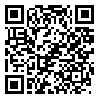Carpet is one of the Iranian arts that is shaped in direct interaction with designers and weavers and therefore is a visual expression of their beliefs and ideas. This statement of beliefs, originates from the artist’s mentality influenced by culture, customs and religious teachings of society which is then traced on the vertexes of the carpet in different arrays and in the form of various designs. For this reason, various issues have been incorporated in carpet with a symbolic expression and each imply a cultural and religious concept. In the mist of this, numbers have a deep root in the culture of this country and was divided into two types: quantitative and qualitative. Qualitative aspect, or in other words, the symbolic and meaningful dimension of numbers has long been in consideration and the application of numbers in the arts of this country can be considered as a sign of the grand position of the symbolic aspect of numbers in different eras.
This article reviews the place and symbolic use of numbers in carpet with analytical method and library data collection. The results show that the numbers one, three, four, five, six, seven and eight have been symbolically used in different carpet designs. This application implies that the organization of images and designs has been based on the symbolic meanings of these numbers. Furthermore, it can be been seen that some carpet patterns and designs have been named based on their numerical format, thus strengthening the role of numbers in carpet and conveying the symbolic meaning they possess. These patterns, which are influenced by the cultural and religious teachings of the society, have been employed by designers and weavers and have been the source of inspiration for their designs.
Received: 2016/01/16 | Accepted: 2016/07/26 | Published: 2017/06/22
| Rights and permissions | |
 |
This work is licensed under a Creative Commons Attribution-NonCommercial 4.0 International License. |



